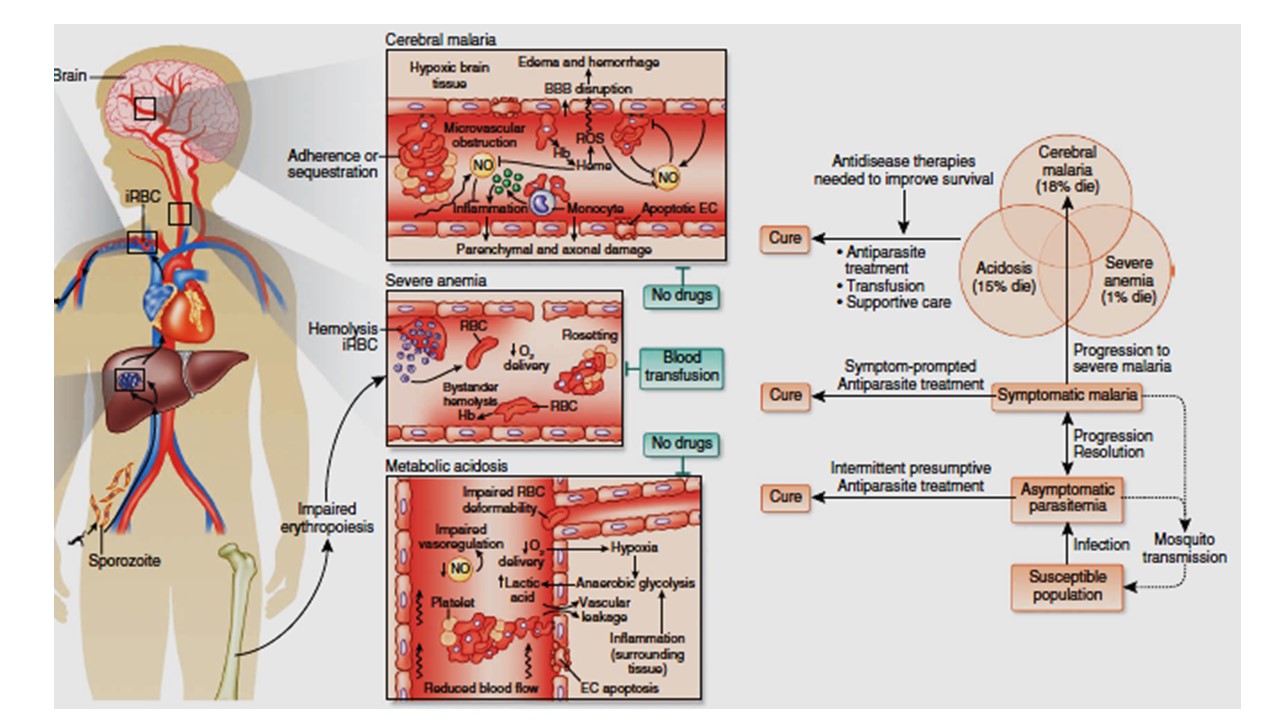Within 12 h of invasion, the parasite remodels the red blood cell (RBC), facilitating the growth of the parasite and transporting PfEMP1 to the erythrocyte membrane. Infected RBCs (iRBCs) bind to endothelium through PfEMP1 primarily to avoid clearance by the spleen. Sequestration of infected RBCs injures endothelial cells (ECs) and disrupts blood flow, causing tissue hypoxia and lactic acidosis. These mechanisms contribute to organ-specific syndromes such as cerebral malaria and placental malaria when sequestration occurs in the brain or placenta. Hemolysis of infected and bystander (uninfected) RBCs causes anemia that may be exacerbated by impaired erythropoiesis. Hemolysis also contributes to endothelial injury and dysfunction as free hemoglobin (Hb) catalyzes oxidative damage and consumes nitric oxide (NO), a regulator of endothelial cells. Merozoites develop in the sequestered RBCs, and the rupture of infected erythrocytes causes fever and rigors. Most merozoites invade uninfected RBCs and circulate as ring-stage parasites, but a small fraction of merozoites develop into male and female gametocytes that infect mosquitoes when taken up during a blood meal. Gametocytes continue to circulate after treatment at the asexual blood stages; therefore, safe drugs to kill circulating gametocytes would help in P. falciparum elimination. ROS, reactive oxygen species; BBB, blood-brain barrier. Miller LH, Ackerman HC, Su XZ, Wellems TE. Malaria biology and disease pathogenesis: insights for new treatments. Nat Med. 2013 19(2):156-67
